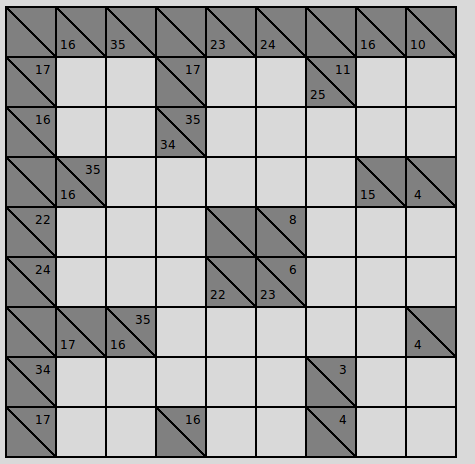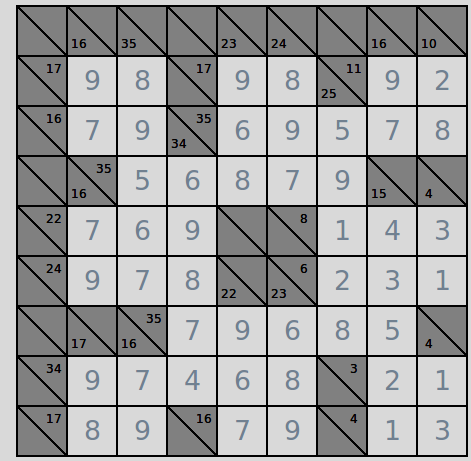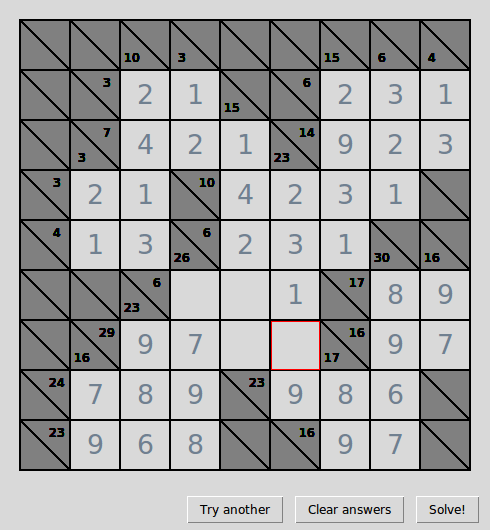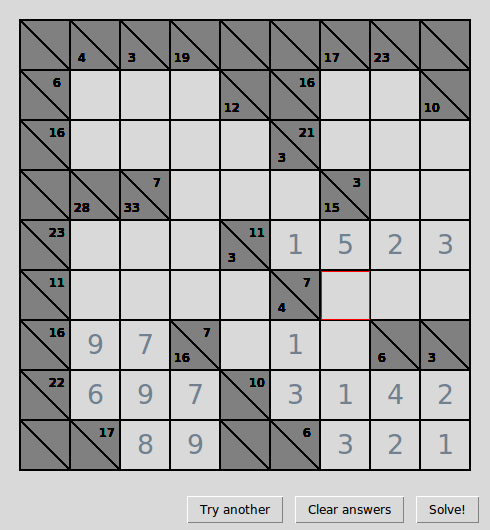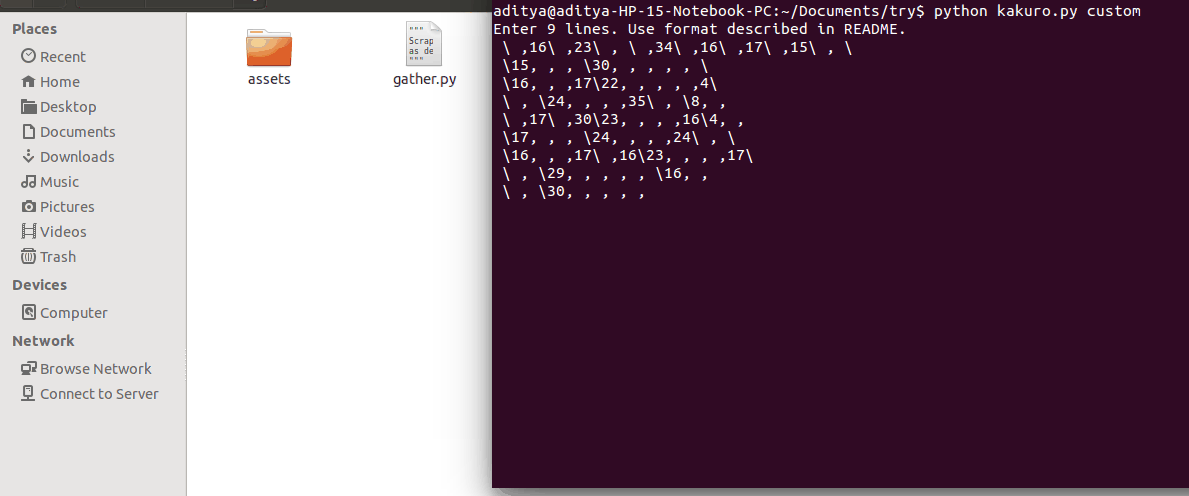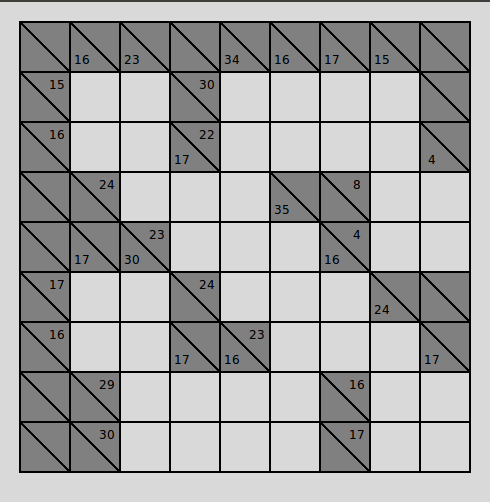Kakurosy is an application for playing 9x9 Kakuro on. It comes with a web-scraper for gathering puzzles from the internet, a GUI screen for the user to solve the puzzle and an in-built solver. You can also use it as a solver as it allows custom puzzles to be loaded. Kakurosy frames the Kakuro puzzle as an Integer Linear Program, which is solved using a solver.
Kakuro or Cross Sum (Japanese: カックロ) is a fun, entertaining and highly addictive puzzle game that is often referred to as a mathematical transliteration of the crossword. It was more popular once than the now ubiquitous Sudoku, it is extremely versatile because it can come in any size and the fillout space could assume arbitrary shapes and arguably it is more challenging. Find out more on Wikipedia. It has been proven to be NP complete.
Kakuro is played on a rectangular grid of cells. The aim is to place numbers from 1 to 9 in blocks of empty cells running horizontally and vertically inside the larger grid. The sum of each block should match the target number, or clue, which appears inside darkened cells, divided into two by diagonal lines, at the top (for vertical problems) or to the left (for horizontal ones) of each empty block. No number may be used more than once in each block.
In Kakurosy, the puzzles are played on a 9x9 grid
Notice that duplicate entry is flagged off immediately. However you may choose to suppress and proceed.
You may clear the entries or view the solution in a jiffy using the eponymous buttons. Also, you can skip to the next puzzle with a promise of a new puzzle everytime in the current session.
In the custom (as opposed to random) mode, a puzzle may be entered from the console. Then you could try it out on the program and solve it.
For entering any 9x9 Kakuro puzzle from the console, the following format is to be used:
- Every row of the puzzle is to be entered in a new line. Thus, there should be nine lines terminated by newlines.
- For a row, each cell entry must be delimited by commas. Thus there should be nine cells (and eight commas) a line.
- A blank cell for user input is to be represented by a space character. A darkened cell (with a diagonal partition)
is to be represented by
x\ywherexdenotes the entry in the lower-left triangular subcell andydenotes the entry in the upper-right triangular subcell.xandycan be integers or space character.
Here is an example. The following input:
\ ,16\ ,23\ , \ ,34\ ,16\ ,17\ ,15\ , \
\15, , , \30, , , , , \
\16, , ,17\22, , , , ,4\
\ , \24, , , ,35\ , \8, ,
\ ,17\ ,30\23, , , ,16\4, ,
\17, , , \24, , , ,24\ , \
\16, , ,17\ ,16\23, , , ,17\
\ , \29, , , , , \16, ,
\ , \30, , , , , \17, ,
represents the following puzzle:
In Kakuro, there is no objective function (in this case it is set to 0), only constraints.
There are two constraints that must be passed on to the ILP solver.
This determines the choice of integer variables.
-
Sum Constraints: Each block or zone must sum up to the specified number in the block head. The horizontal blocks or zones have it to the left, the vertical ones on the top.
-
Distinctness Constraints: Each block or zone must have distinct integers from
1 to 9in its cells. (The restriction to digits is enforced during entry itself.)
We use the variables u_i_j_k each a 0-1 integer variable which is 1 iff the cell entry in the cell
in row j and column k is equal to i in the solution.
Kakurosy is written in Python2. It also requires GPLK, part of the GNU project, and PuLP, a popular LP modeler written in python. It can generate MPS or LP files and call GLPK (also COIN CLP/CBC, CPLEX, and GUROBI) to solve linear problems. GPLK can be installed in Linux from the package manager:
sudo apt-get install python-glpk
sudo apt-get install glpk-utils
sudo apt-get install glpk-doc
sudo apt-get install libglpk-dev
PuLP can be installed using pip:
sudo pip install pulp
sudo pulptest
The test puzzles are in the savedpuzzles.txt file.
To add more puzzles into this file (scrapes from here: So kindly read this and use
accordingly. Please ensure web connection):
python gather.py
To use this puzzle bank and start a session with a randomly selected puzzle:
python kakuro.py random
To enter a custom puzzle in the console to be run in the application:
python kakuro.py custom
I love Kakuro so this was a really fun project!
This project is licensed under the MIT License - see the LICENSE.md file for details
